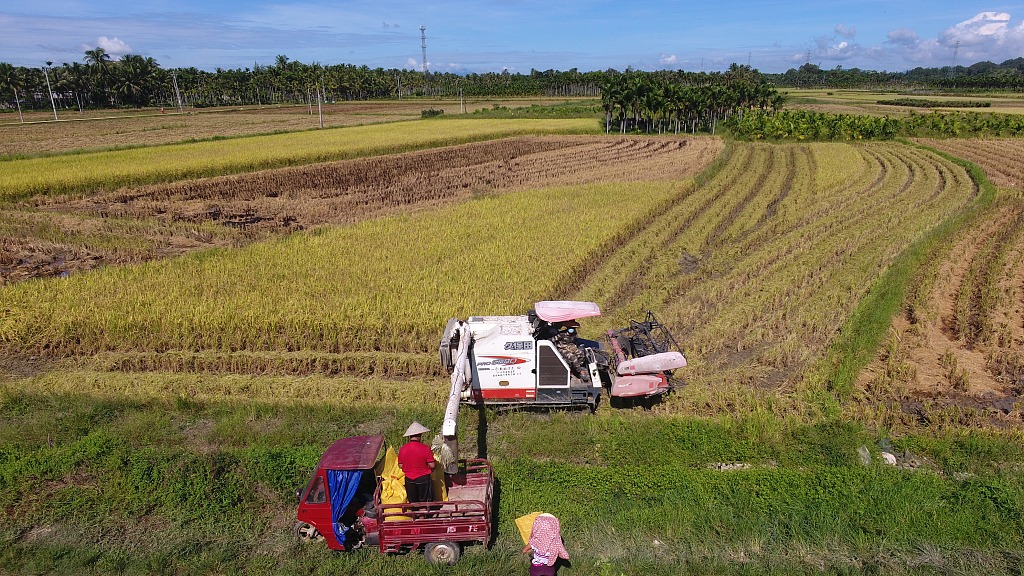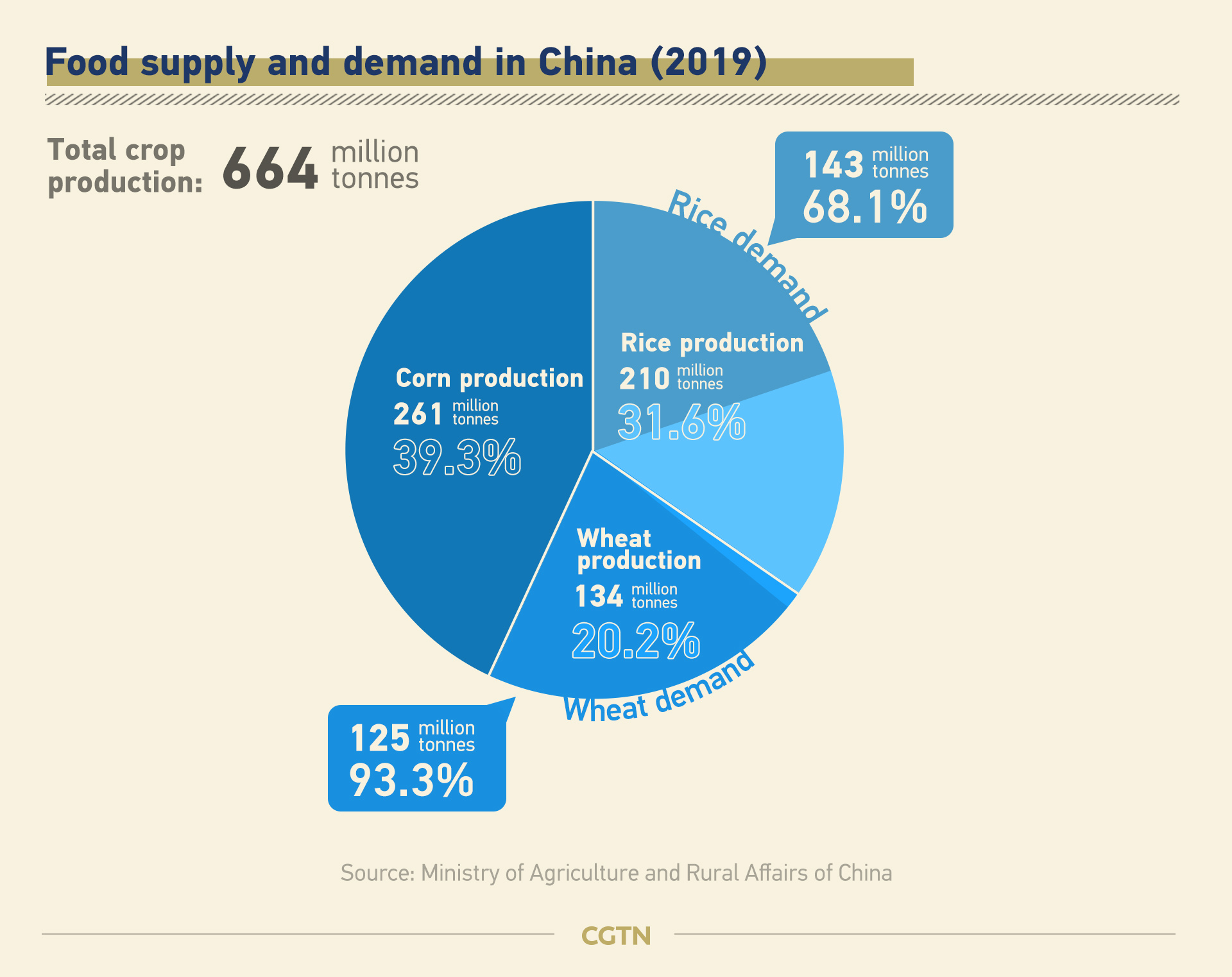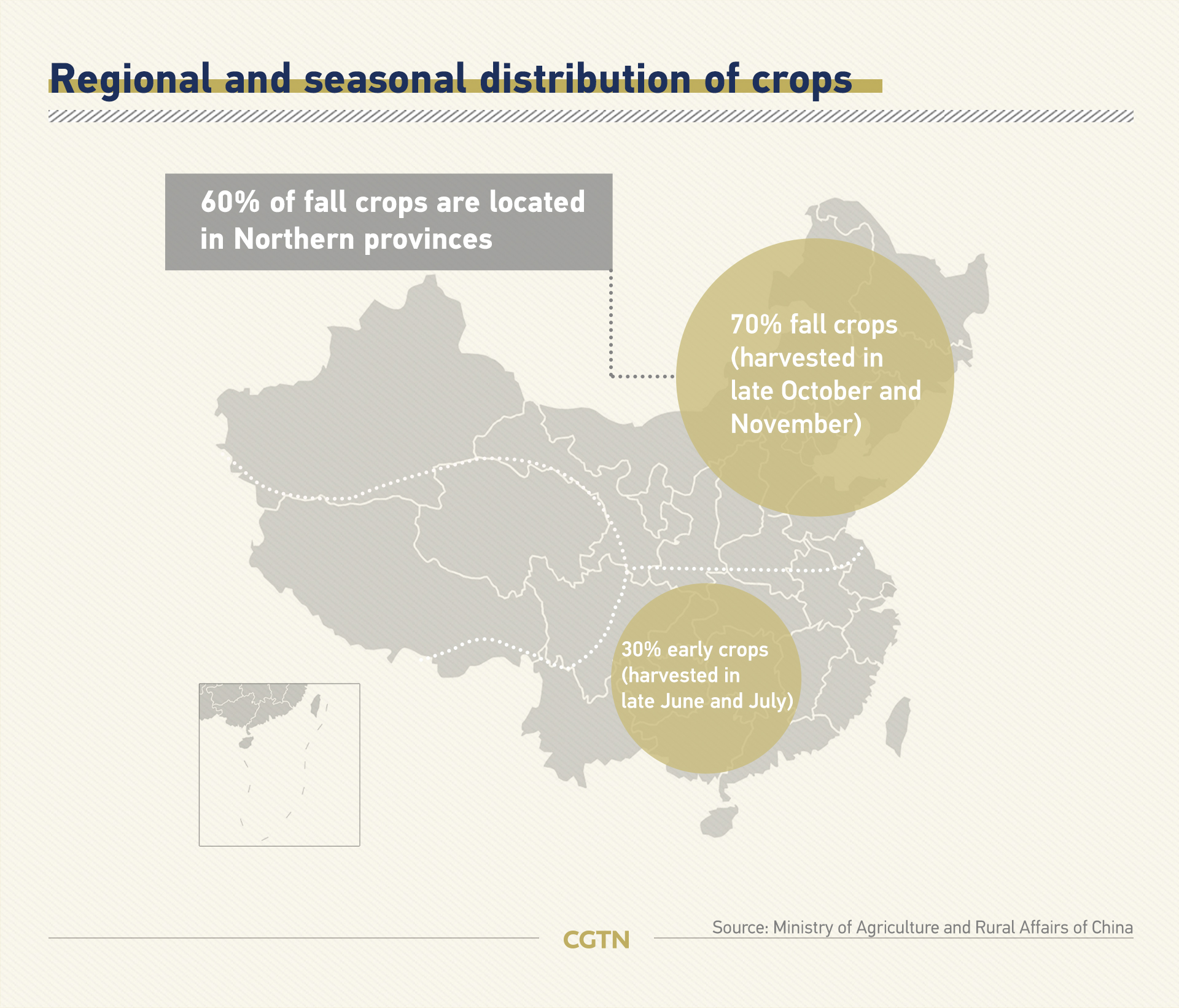
Farmers are harvesting rice in Qionghai City, Hainan Province, August 23, 2020. /VCG
Farmers are harvesting rice in Qionghai City, Hainan Province, August 23, 2020. /VCG
Due to COVID-19 and floods in several southern provinces, concerns over food shortage have arisen among the public. But experts and officials of the agriculture ministry have confirmed that the impact of floods in food supply are limited.
Food supply and demand in China
China's crop production can meet people's consumption demand completely.
In terms of production and demand, China's crop output reached 664 million tonnes in 2019, including 210 million tonnes of rice, 134 million tonnes of wheat and 261 million tonnes of corn, while rice and wheat consumption in China reached 143 million tonnes and 125 million tonnes, respectively, standing at a lower level than production, according to the Ministry of Agriculture and Rural Affairs of China.
Moreover, the consumption of rice and wheat has been reducing year by year. According to the National Bureau of Statistics, from 2013 to 2018, China's annual per capita crop consumption dropped from 138.9 kilograms to 116.3 kilograms.

From the trade perspective, most of imported crops by China are feed grains, such as soybeans. Wheat and rice account for only a small part of crop imports. In 2019, soybean imports reached 88.511 million tonnes, accounting for 79.4 percent of total crop imports.
In addition, China has been reducing the imports of wheat and rice for several years now. In 2019, China imported 2.55 million tonnes of rice, a drop from four million tonnes in 2017. Besides, in 2019, China exported 2.75 million tonnes of rice. Domestic self-sufficiency rates of wheat and rice are maintained at a high level of 99.1 percent.
As to the inventory, the total government inventory of rice, wheat, and corn is about 300 million tonnes, which can fully meet domestic consumption, according to official estimates, and there are also crops kept by farmers and businesses as crop inventory in China includes two parts: government inventory and social inventory.
Five percent of cropland in China was affected by floods, and only one percent was destroyed, which experts say will only cause a limited impact on crop production, according to the Ministry of Emergency Management.
Official data shows that floods have damaged 6,032,600 hectares of crops so far, of which 1,140,800 hectares have been destroyed. However, the total area of croplands in 2019 is 116.06 million hectares, which means the affected area only accounts for a very small part of the total.
Additionally, China's total summer crop output in 2020 is 142.81 million tonnes, an increase of 0.9 percent over 2019. The total output of early rice was 27.29 million tonnes, up 3.9 percent from 2019.
As for the fall harvest in October and November, which accounts for more than 70 percent of China's total annual grain output, this is rarely impacted by floods, as 60 percent of fall crops are planted in northern China, which has much less rainfall compared with southern provinces.

Independent research conducted by Shenwan Hongyuan, a top securities company in China, estimated that the floods in China would reduce crop output by about 11.2 million tonnes in 2020, while it accounts for merely 1.69 percent of the country's total crop output in 2019.
In general, wheat and rice are sufficient to meet residents' demand as China's crop production and inventory are robust, and the current trade channels are unimpeded. However, experts cautioned that with the improvement of people's living standards, meat consumption would continue to increase, and that requires more feed grains in which China counts on imports from other countries, especially the U.S.
Analysts predict that China will import from all sources of soybeans next year due to the current China-U.S. trade tensions and the growing hostility of the U.S. towards China.
Read more: China launches anti-food waste campaign amid global food crisis